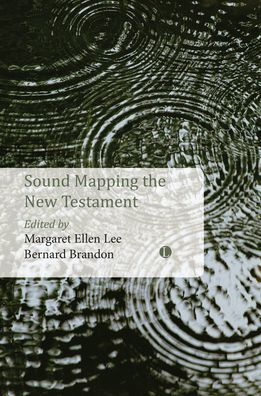Sound Mapping the New Testament
In the ancient world, writings were read aloud, heard, and remembered. In contrast, modern exegesis assumes a silent text. For Margaret Lee and Brandon Scott, the disjuncture between ancient and modern approaches to literature obscures the beauty and meaning in writings such as the New Testament. As the structure of an ancient Greek composition derives first from its sounds, and not from the meaning of its words, sound analysis, analysis of the signifier and its audible dimension, are crucial to interpretation. Sound Mapping the New Testament explores writing technology in the Greco-Roman world, and uses ancient Greek literary criticism for descriptions of grammar as a science of sound and literary composition as a woven fabric of speech. Based on these perspectives and a close analysis of writings from the four Gospels, Paul, and Q, Lee and Scott advance a theory of sound analysis that enables modern readers to hear the New Testament afresh. This second edition includes a new introduction which reviews a decade of sound mapping scholarship.
1101124500
Sound Mapping the New Testament
In the ancient world, writings were read aloud, heard, and remembered. In contrast, modern exegesis assumes a silent text. For Margaret Lee and Brandon Scott, the disjuncture between ancient and modern approaches to literature obscures the beauty and meaning in writings such as the New Testament. As the structure of an ancient Greek composition derives first from its sounds, and not from the meaning of its words, sound analysis, analysis of the signifier and its audible dimension, are crucial to interpretation. Sound Mapping the New Testament explores writing technology in the Greco-Roman world, and uses ancient Greek literary criticism for descriptions of grammar as a science of sound and literary composition as a woven fabric of speech. Based on these perspectives and a close analysis of writings from the four Gospels, Paul, and Q, Lee and Scott advance a theory of sound analysis that enables modern readers to hear the New Testament afresh. This second edition includes a new introduction which reviews a decade of sound mapping scholarship.
56.0
In Stock
5
1

Sound Mapping the New Testament
432
Sound Mapping the New Testament
432
56.0
In Stock

Product Details
| ISBN-13: | 9780718897574 |
|---|---|
| Publisher: | The Lutterworth Press |
| Publication date: | 03/28/2024 |
| Pages: | 432 |
| Product dimensions: | 6.00(w) x 1.25(h) x 9.00(d) |
About the Author
From the B&N Reads Blog
